 I hope many ladies can join with me every Tuesday in celebrating the life and cult of St Anne throughout the history of the Church leading up to her feastday on the 26th of July. This is a nine week posting of a beautiful article published in the Catholic newspaper called, Catholic ~ The Voice of Catholic Orthodoxy the article itself is is an exerpt from a book by Rev Fr Myles V Ronan CC, MRIA 1927.
I hope many ladies can join with me every Tuesday in celebrating the life and cult of St Anne throughout the history of the Church leading up to her feastday on the 26th of July. This is a nine week posting of a beautiful article published in the Catholic newspaper called, Catholic ~ The Voice of Catholic Orthodoxy the article itself is is an exerpt from a book by Rev Fr Myles V Ronan CC, MRIA 1927.Edit 2011: I have since discovered that the wonderful newspaper that this St Anne article has come from, is put out by the Transalpine Redemptorists on the island of Papa Stronsay in Scotland. I now have their blog linked at the top of my lefthand sidebar, you can order this newspaper/magazine from their site.
Today is week three, here are the previous three postings:
Week 3
During these nine weeks I am also giving away a St Anne gift for each posting (either a St Anne chaplet, rosary or necklace of heirloom quality.) To enter the draw, read the day's posting and answer the question taken from the St Anne story. Then email me the answer with your name and email address written beside it, if the name and email address is not there, I cannot add you to the draw. I will draw out and announce the winner the following Tuesday and release the photo of the next gift and question and on it goes! Feel free to enter each week's draw.
I ask just one special favour, if you could offer an Ave in honour of St Anne for my sister Carmen who would dearly love to be blessed with a child after nine years of infertility, many grateful thanks.
During these nine weeks I am also giving away a St Anne gift for each posting (either a St Anne chaplet, rosary or necklace of heirloom quality.) To enter the draw, read the day's posting and answer the question taken from the St Anne story. Then email me the answer with your name and email address written beside it, if the name and email address is not there, I cannot add you to the draw. I will draw out and announce the winner the following Tuesday and release the photo of the next gift and question and on it goes! Feel free to enter each week's draw.
I ask just one special favour, if you could offer an Ave in honour of St Anne for my sister Carmen who would dearly love to be blessed with a child after nine years of infertility, many grateful thanks.
And so we continue on from last week.....
THE VOW OF QUEEN ANNE
We now come to the 17th century, in which Louis XIII found himself with no heir. His spouse, Anne of Austria, turned her eyes towards Apt, and full of confidence, she sent a large and brilliant deputation to register a vow, that of the whole nation, at the feet of St Anne. Never was prayer so solemn, and never was prayer more generously heard. The Queen, a long time barren, became a mother in spite of her advanced age, and gave a son to the race of Henry IV, to her royal spouse, and this son was Louis XIV.
Anne of Austria, in order to perpetuate the memory of the protection of which she had been the object, had a side chapel built to the cathedral, on the plan of St Mary Major's. The Chapel Royal, as the new building was called, was consecrated on the feast of St Anne, 26th July, 1664, and two days afterwards, with great solemnity, the body of the Saint, as well as the relics of the other holy protectors of the town, was transferred to it. This was the second translation.
Apt became the centre of attraction for pilgrims, and not only the churches of Gaul but those of other lands solicited relics from her tomb. the over-generosity of the Chapter and others, charged with the care of the Sacred Relics, assumed such proportions that, on 8 January, 1621, Parliment thought it well to interfere. It forbade the relics to be touched without the express permission of the King by letters patent.
In the year 1338, a Bull of Benedict XII recognised the authenticity of the relics at Apt, and in 1404 Benedict XIII stated that "the body of St Anne, Mother of the glorious Virgin Mary, lies at Apt from ancient times in an oratory or crypt under the high altar." An arm of the saint also was solicited and obtained by the Popes, and placed under the Benedictine monks in the magnificent basilica of St Paul outside the Walls near Rome.
TWICE ACROSS THE WAVES
In the early centuries devotion to St Anne spread from Apt to Great Britain, due to constant trading carried on between the hardy navigators of that country and the people of Provence or southern France. But when the Saxon barbarians poured into Britain from A.D. 449 onwards, considerable numbers of the native Britons sought a refuge in the mountains of Wales or the sea and found a home in what is now called Brittany.
These Bretons, it may be remarked, are Celts, speaking a language akin to Irish. And as the Bretons, while in Britain, had developed a great devotion to St Anne, so too, when they established themselves in Brittany, they recognised her as the protectress of their nation, indeed, they ascribe the preservation of their faith and language to her protection.
From time immemorial they honoured her at two places, Palud and at St Anne d'Auray. The neighbouring districts were still under the yoke of pagan divinities, in spite of the presence of a bishop at Vannes. In the country round the places where the shrines stood, St Anne was a wonderful force in the work of the conversion of the inhabitants.
St Anne d'Auray was destroyed in the year 700 probably during Gallo-Bretonic strife. For nine centuries there were no traces of it. There remained only the name of the neighbouring village, Keranna (City of Anne), which had survived, as well as a vague tradition that told that there had been a chapel in the field called Bocenno.
Nevertheless, St Anne had not lost her place among the Bretons. She still continued to be the Saint of the country, and was, as it were, the incarnation of the soul of Brittany. Numerous people were called after her, and amongst them, she who was the last queen of the country: numerous chapels were also built in her honour in the duchy. "To St Anne must go once every Breton," namely, either to her shrine on earth or to herself in Heaven. A day came, however, when she whom the Bretons had chosen as the Mother of their country caused her ancient sanctuary of Arvor or d'Auray to rise from the dust.
To be continued next week...
 Last week's question was: Which fruit is dedicated to St Anne and distributed to the sick on her feast day each year in Apt? The answer: Grapes
Last week's question was: Which fruit is dedicated to St Anne and distributed to the sick on her feast day each year in Apt? The answer: GrapesDonna Marie Tapp was the first name out of the hat with the correct answer ~ congratulations! Email me with your address Donna Marie, and I'll post the St Anne chaplet you see above to you!
For all those ladies who entered last week's draw, feel free to answer this week's draw, answering the new question below.
Here is an image of this week's St Anne chaplet:

To have a chance to win this week's heirloom quality St Anne chaplet made from gemstones and a solid bronze vintage reproduction St Anne d'Auray medal answer the following question:
Q: From time immemorial the Bretons had honoured St Anne at two places, what is the names of these two places?
Email me the answer with your name and email address written next to the answer. Come back next Tuesday to see if you have won!





































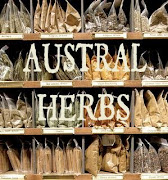




























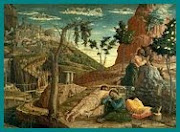








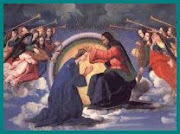








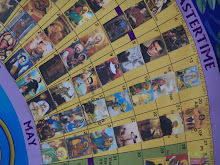


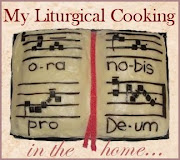




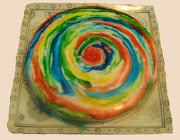
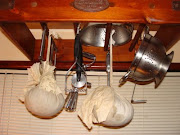

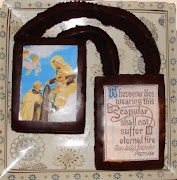

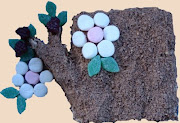
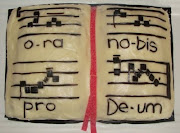

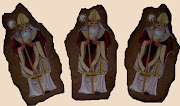







No comments:
Post a Comment